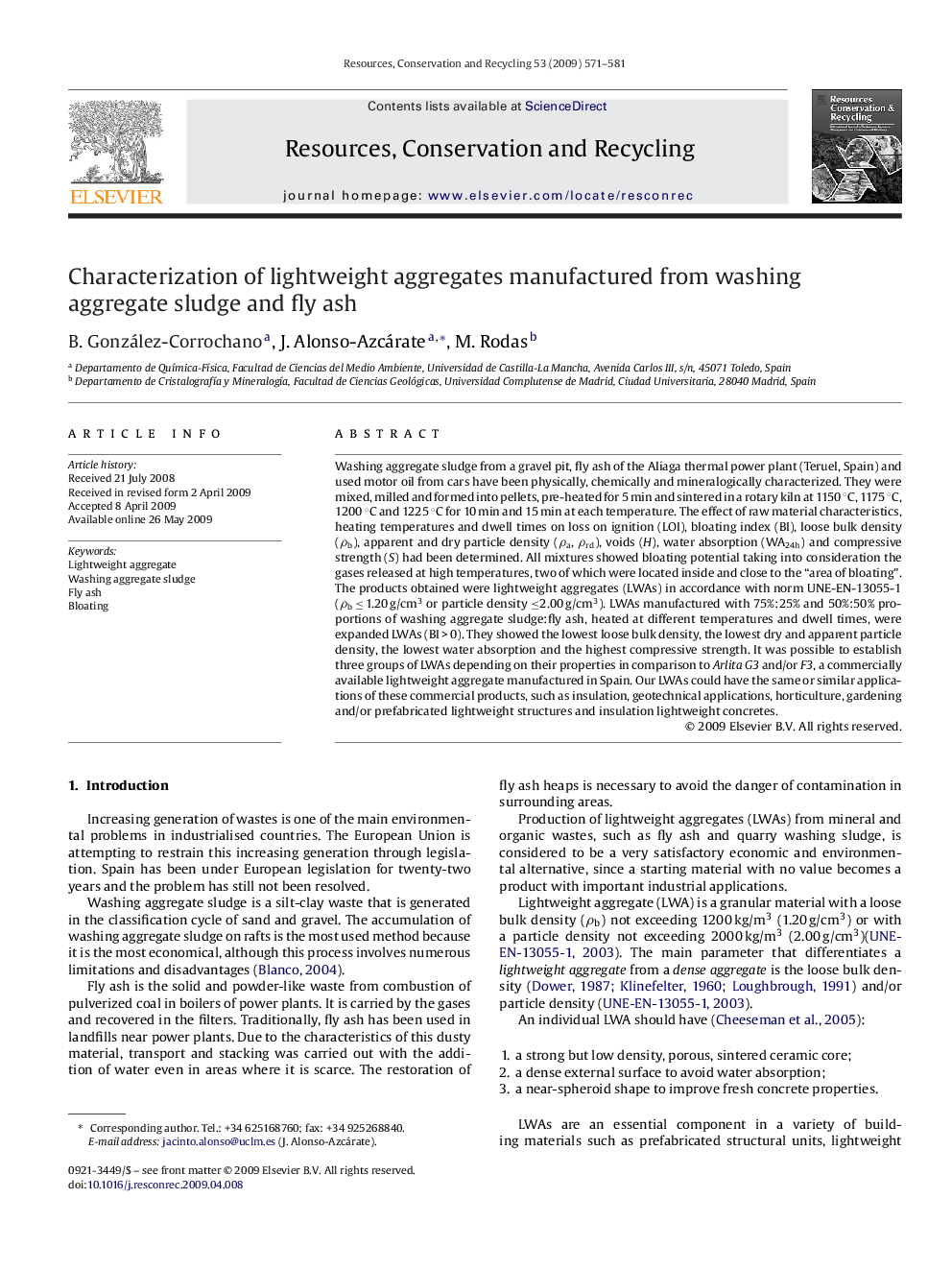| Article ID | Journal | Published Year | Pages | File Type |
|---|---|---|---|---|
| 1063656 | Resources, Conservation and Recycling | 2009 | 11 Pages |
Washing aggregate sludge from a gravel pit, fly ash of the Aliaga thermal power plant (Teruel, Spain) and used motor oil from cars have been physically, chemically and mineralogically characterized. They were mixed, milled and formed into pellets, pre-heated for 5 min and sintered in a rotary kiln at 1150 °C, 1175 °C, 1200 °C and 1225 °C for 10 min and 15 min at each temperature. The effect of raw material characteristics, heating temperatures and dwell times on loss on ignition (LOI), bloating index (BI), loose bulk density (ρb), apparent and dry particle density (ρa, ρrd), voids (H), water absorption (WA24h) and compressive strength (S) had been determined. All mixtures showed bloating potential taking into consideration the gases released at high temperatures, two of which were located inside and close to the “area of bloating”. The products obtained were lightweight aggregates (LWAs) in accordance with norm UNE-EN-13055-1 (ρb ≤ 1.20 g/cm3 or particle density ≤2.00 g/cm3). LWAs manufactured with 75%:25% and 50%:50% proportions of washing aggregate sludge:fly ash, heated at different temperatures and dwell times, were expanded LWAs (BI > 0). They showed the lowest loose bulk density, the lowest dry and apparent particle density, the lowest water absorption and the highest compressive strength. It was possible to establish three groups of LWAs depending on their properties in comparison to Arlita G3 and/or F3, a commercially available lightweight aggregate manufactured in Spain. Our LWAs could have the same or similar applications of these commercial products, such as insulation, geotechnical applications, horticulture, gardening and/or prefabricated lightweight structures and insulation lightweight concretes.
